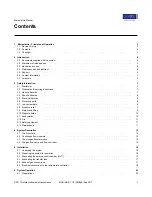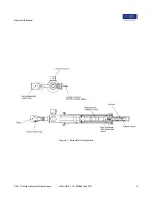
Microstat He Manual
Each cryostat may be operated in any orientation (although the performance is likely to be reduced if it is inverted). The sample is mounted
in a vacuum, and cooled by conduction. The sample temperature is continuously variable between 3.8K and 500K.
The OptistatCF-V cryostat is also a continuous flow cryostat, which uses the same cooling unit as the MicrostatHe. This cryostat has four
radial window ports and one axial port with optical access of f/0.9.
Schematics of each of the cryostats are shown in the images below
Figure 4.2: Microstat He schematic
Optistat CF-V schematic
The sample is mounted in vacuum on a heat exchanger, and optical access to the sample is available through the windows. The sample
space and radiation shields are thermally insulated from the room temperature surroundings by the outer vacuum chamber (OVC). This
space is pumped to a high vacuum before the cryostat is cooled down but it is protected against accidental build up of high pressures by
a pressure relief valve.
Up to two windows can be fitted to the MicrostatHe. Each window is permanently bonded into the OVC flange, which is shaped to allow
the sample to be mounted as close as possible to the inside surface of the window. It also allows a typical optical microscope objective
lens turret to be rotated without withdrawing the microscope objective.
This manual describes the operation of these systems in conjunction with an Oxford Instruments Mercury iTC temperature controller. The
cryostats can be operated manually if a temperature controller is not available, although it may be difficult to obtain good temperature
© 2017 Oxford Instruments Nanoscience
MAN-MHE-1.1.0 (28ff3d8) Sep 2017
13






























